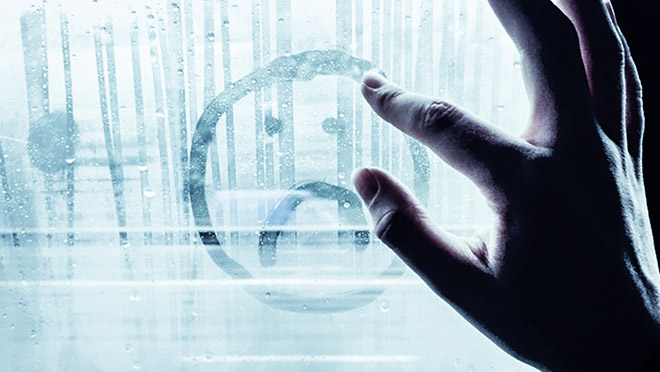Energy efficiency myths abound, but we ran out of time

Answers to questions we didn't get to in member-exclusive livestream event
So many hungry Team Power Smart members, so little time.
More than 160 Team Power Smart members, all with an appetite for saving energy and money, kept our two hosts on their toes throughout the March livestream mythbusters event. Members also got in on prizes of up to $150 for correctly answering mythbuster questions.
We didn't get to all questions submitted during the event. So here we go.
Where do you get what you need to draftproof windows and doors?
We got a lot of questions about draftproofing, and that makes us happy. It's probably the least expensive upgrade with the biggest payoff, since heating (and cooling) carries the biggest chunk of electricity use in many B.C. homes.
A good place to start is our DIY draftproofing tips page, which features a helpful video featuring Dave installing foam and V-seal weatherstripping. For more in-depth information, including how to apply window insulator film, plus a video on sealing oft-forgotten outlets and switches, see our reduce drafts feature.
One member asked for specifics around draftproofing a condo unit's windows that open on an angle. This can be a bit tricky: you'll need to measure and cut pieces carefully to minimize leaks while also ensuring the window can close. We also found detailed online instructions for 7 ways to draftproof your windows that might be helpful.
Another Team Power Smart member asked where to buy a leak detector and how much that would cost. While you can find thermal leak detectors – digital tools that use infrared to measure surface temperatures – for as little as $60, you may find some budget-friendly options that can also do the job. One BC Hydro engineer recommends professional smoke pencils or even a Wizard Stick science toy – which both provide steam or smoke for your test – but they can be hard to track down or expensive. If you're lucky enough to find one, move the smoking device around the inside of closed windows, doors, and other possible drafty areas. Check around the microwave oven and any possible leaky areas on exterior walls, for places where the smoke swirls as it's moved by drafts.
Can't find an affordable smoke pencil? Have fun blowing bubbles near windows and where you feel there may be draughts. The bubbles will let you know where leaks are coming from.
What's using energy while I'm away on vacation?
It's a good idea to ensure nothing is running in your home that doesn't need to be running when you're away. While tripping the circuit breakers to shut everything off isn't recommended, you can selectively unplug electronics (game consoles, printers, computers, coffee makers, etc.) and even major appliances. That could include your fridge – outside of heating systems, it's the device that uses the most energy in your home on an annual basis – if you take time to empty it before an extended getaway.
One question we get a lot is around water heaters and thermostat settings. When going away, set electric heaters to the lowest temperature. For gas water heaters, you can use the vacation setting.
Set your space heating thermostats to 16°C while you're away in winter. And in summer, consider turning off any air conditioning in your home: closing all windows and window coverings should keep your home cool enough. If you're concerned your home will be too hot, adjust your air conditioning or heat pump so that it's four or five degrees warmer than usual.
What's the most efficient thermostat setting for day and night?
We're big believers in striking a balance between energy savings and comfort. One of the go-to tips we recommend is to program or adjust temperatures in different rooms according to such factors as whether they're being used and what they're being used for.
Because heating costs rise about 5% for every degree above 20°C (68°F) you set your thermostat, use the following as a guide (except for heat pumps, which work best with a set-it-and-forget strategy):
- 16°C when you're away from home or sleeping.
- 21°C when you're relaxing or watching TV.
- 18°C when you're cooking or doing housework.
Get detailed information about how to use a heat pump efficiently. Get the basics of radiant in-floor heating at lowes.ca.
And if you're using air conditioning and/or a heat pump, resist the temptation to try to keep your home too cool. Most people can stay comfortable in a heat wave with an indoor temperature of 25°C.
Learn more with our winter home heating tips and summer home cooling tips.
Do smart plugs/switches and power bars save energy?
Smart plugs and switches are still connected to wifi, so they use energy when switched off as well. But that energy is minimal, so isn't something to worry about while away. Don't forget that you can use a smart plug or timer to control lights you may want to go on and off at different times for security reasons while you're away.
We had one question around the effectiveness of power bars, which can offer a variety of benefits including power surge protection and, with smart strips, the ability to switch off multiple computer peripherals (printers, scanners, etc.) or sound components while using always-on plugs to ensure power gets to a chosen component like a PVR. Many of today's power bars and smart strips include handy USB ports and some include the ability to control each plug remotely via an app.
In addition to convenience and control, power bars and smart strips can help avoid the energy costs of lesser-used components on standby mode. But the effectiveness of smart power strips in saving energy varies, from about 5% to 20% on the plug loads they control in your home.
Big savings are possible with bars and strips smart enough to turn devices off when you're no longer using them, such as when you fall asleep (or wander away) while watching TV or playing a video game. While so-called "phantom load" from one device may not add up to much, multiple devices pulling power can have a significant impact on your electricity bills.
Does BC Hydro have resources or tools to teach kids about energy saving?
Our popular Power Smart for Schools website offers fun and engaging explorations and lesson plans for teachers and students, but can also be used for activities at home. Each activity is geared toward a specific age group.
You can find a wealth of ideas around topics including conservation, energy, sustainability, electricity, and safety.
Does heat escape through bathroom and kitchen fans?
Take care to ensure that exhaust fans in your home vent to the outside and that they close properly when not in use.
Exhaust fans are a great weapon for helping control the humidity in your home and keeping it free from condensation that can lead to water damage around windows and in corners of rooms, and potentially produce mold that can become a health issue. But fans should only run when you need them, as they do pull a certain amount of heat out of your home. Ideally, your bathroom fans in particular are controlled via a dehumidistat that turns fans on and off according to humidity levels in the home.
Learn more with our feature fantastic options for limiting condensation in your home.
